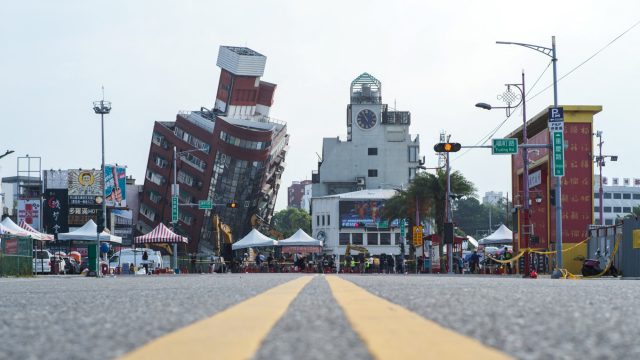
Taiwan experienced a 7.4 magnitude earthquake on April 3, the country’s strongest in 25 years. The quake killed at least 10 people and injured over 900, while some are still missing. Despite the strength of the tremor, the death toll and infrastructure damage were much lower than expected — largely due to Taiwan’s building engineering requirements.
Why was earthquake damage in Taiwan so minimal?
Taiwan came out relatively unscathed despite experiencing its biggest earthquake in over two decades. “It is quite remarkable that given an earthquake of this magnitude, we have seen so few reported causalities,” Daniel Aldrich, a political science professor at Northeastern University who studies global earthquake resilience, said to NPR. The country had previously revised building codes following the 1999 7.3 magnitude earthquake that killed over 2,000 people. “Taiwan reorganized its disaster response and began a number of attempts at bottom-up and top-down responses to shocks,” Aldrich said. “What we’re seeing in 2024 is a direct outcome of the previous response and governmental criticism.”
In the aftermath of the 1999 earthquake, the country built new buildings with rigorous engineering standards and strengthened older buildings to be more quake-resistant. “The concept of building design, essentially, is that we remain intact during small earthquakes, repairable after moderate ones, and withstand major earthquakes without collapsing,” Teng Tzu-yu, head of Hualien’s Economic Affairs Department, said to The Wall Street Journal. In many Taiwanese cities, life continued as normal the day after last week’s earthquake, with people returning to work and stores opening.
Taiwan specifically cracked down on developers skimping when it came to construction. “They’ve issued massive fines and penalties for construction firms found to have in any way cut corners on their construction. And there has been a really serious investment in all the new buildings,” Aldrich said to CNN.
What changes were made in preparation?
“Taiwan’s seismologists describe the tremor as having an energy equivalent to 32 of the atomic bombs dropped on Hiroshima,” said CNN. “It rocked the entire island of Taiwan and was felt as far away as Hong Kong and Shanghai.” Even with all that shaking, people inside Taipei’s tallest skyscraper, Taipei 101, stayed safe thanks to a “large yellow pendulum at the building’s center that helped absorb the shock,” said The Washington Post. Called a wind damper, it “absorbs slight swinging motions of the building at all times to the reduce[d] discomfort of the people in the building,” said the Taipei 101 website.
For non-skyscrapers, Taiwan’s updated building codes required “robust steel rebar designs embedded in reinforced concrete, strengthening building foundations, and staging regular earthquake drills among the general public,” said NPR. “The most important task that we have done is the retrofit for the … schools,” Kuo-Fong Ma, a research fellow and seismologist at the Academia Sinica in Taipei, said to NPR.
Taiwan’s infrastructure reform is a prime example of preventative measures that can be taken to reduce the destruction of natural disasters. The earthquake’s “relatively light damage” also “illustrated the value of government enforcement of rigorous engineering codes,” said the Journal. Other nations can take similar approaches to prepare for earthquakes, especially those located along faultlines.
The country was rocked but not rolled






